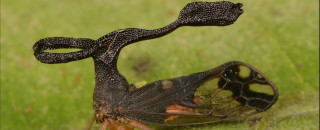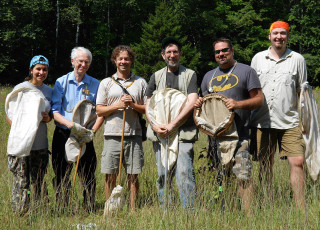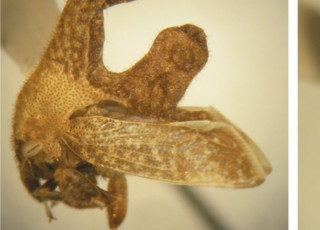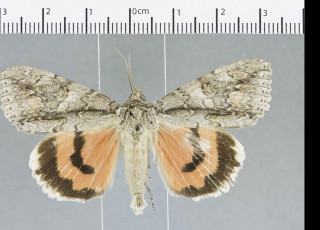A Strange and Mysterious Insect Was Found in Museum Collections First
A photo of Lycoderes nathanieli in the wild. Photo courtesy of Arthur Anker
By Riley Black
There are far more species on our planet than we know. From bacteria to the blue whale, from dinoflagellates to dinosaurs, researchers from a spectrum of scientific disciplines are naming fossil and living species at a furious pace. Many of them are out there in the world, but others are hiding closer to home.
Entomologist and NHMU Director Jason Cryan studies a group of insects called treehoppers - a charismatic family of plant sap-eating bugs related to cicadas. About 22 years ago, he spotted something unusual in the insect collections of the Smithsonian’s National Museum of Natural History. It was a treehopper he’d never seen before - what appeared to be a new species.
At that time, Cryan’s wife was pregnant with their son. During an unexpected hospital stay prior to their son being born, Cryan recalls, “Having time on my hands, I continued to work by her bedside on a manuscript in which this new treehopper species would be published.” And because a new species needs a name, Cryan made a connection between his family and the group of insects he was studying.
“We knew our child would be a boy, and that he would be named Nathaniel,” Cryan says, and so the new treehopper was dubbed Lycoderes nathanieli (Latin for “Nathaniel’s Lycoderes”).
The insect was odd. Known only from this single specimen, the treehopper stood out for having “all these bells and whistles,” Cryan says. Jutting out from the behind the insect’s head was a strange tower-like structure that was distinct from other treehoppers. “They’re like little aliens,” Cryan says.
“It was a weird, unique specimen,” he says, “and we figured our son would be weird and unique, too,” Cryan jokes, and so the name fit.
The story could have ended there. All that was known of Lycoderes nathanieli came from the single specimen. Almost 20 years later, the insect reappeared. “I’d become a known expert in this group of insects,” Cryan recalls, “and a contact on Facebook sent me this photograph and said ‘I know you study these things, and I just encountered this in the Ecuadorian rainforest, do you know it?” Incredibly, it was a beautiful macro-photograph of a living Lycoderes nathanieli.
To date, that first specimen (called the holotype by experts) and the photograph are all that’s known of this species. The treehopper lives in the rainforest, but, Cryan says, “it could be doing anything in that very complex habitat.”If anyone sees one of these insects again, though, experts will instantly be able to recognize it and hopefully learn more.
Without that first museum specimen, the identity of the mysterious treehopper may have been entirely missed. This example illustrates one of the fundamental values of natural history collections: they are treasure chests of the world’s biodiversity. “The drawers and cabinets of a natural history collection include species that we know, as well as plenty of examples of life we have yet to describe,” Cryan says. Open the right drawer and you might find an organism as strange, as mysterious, and as unknown as any that you might see in the deepest jungles of the world. Discovery, then, is less about location than about curiosity.
Riley Black is the author of Skeleton Keys, My Beloved Brontosaurus, Prehistoric Predators, and a science writer for the Natural History Museum of Utah, a part of the University of Utah in Salt Lake City. Our mission is to illuminate the natural world and the place of humans within it. In addition to housing outstanding exhibits for the public, NHMU is a research museum. Learn more.



